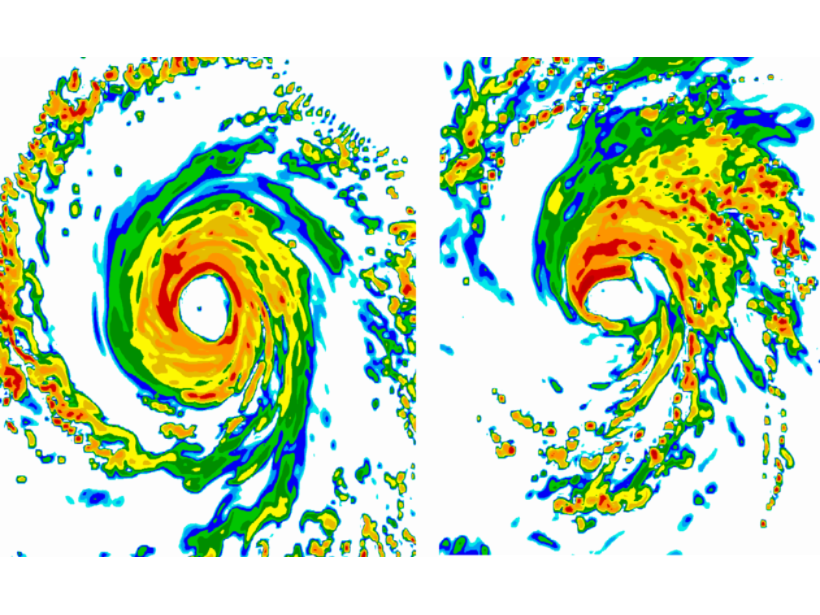Source: Journal of Advances in Modeling Earth Systems (JAMES)
Wind is a fickle force, frequently changing speed and direction. When this variation occurs over a short distance, it is called wind shear. Such sudden reversals are the bane of airline pilots because they can cause planes to lose altitude or change course. They can also disrupt the structure and trajectory of tropical cyclones, rotating complexes of thunderstorms that can strengthen into hurricanes if their path is undisturbed. The more wind shear one of these storms encounters, the more likely it is to be thrown off balance, wobbling like a top as its spin weakens.
Understanding how different levels of wind shear affect tropical cyclones is key to predicting whether a hurricane will develop and how strong it will become. When researchers have used computer models to simulate the interaction between wind shear and cyclones in the past, however, they have been able to simulate only instantaneous changes in wind shear, typically by pausing the simulation to alter the wind conditions. Although tropical cyclones do suddenly weaken in these models, some scientists have wondered whether this was simply due to the “shock” of encountering the instant boost in wind shear and questioned whether or not these models accurately represent real-world conditions.
Now a recent study by Onderlinde and Nolan presents a new method that represents more natural transitions. To simulate these gradual changes, the team used a modified version of the Weather Research and Forecasting Model with a high-resolution grid (points separated by 2 kilometers) centered on developing tropical cyclones. Within this model, wind shear could be incrementally adjusted over time while other aspects of the environment, such as temperature, moisture, and wind, remained in balance.
First, the team allowed weak cyclones to grow into hurricanes in favorable environments. Then, they slowly turned up the wind shear.
As a result of the smooth increase in wind shear, the cyclones steadily weakened and did not return to their previous intensity. This result contradicts previous simulation studies, in which the storms tended to return to their original strength after temporarily weakening when encountering a sudden jolt of wind shear, the team writes. It does, however, fit many observations of how tropical cyclones behave in real life. The researchers suggest that future studies could use the same modeling technique to tweak other variables that affect cyclone strength, such as changing levels of moisture in the air. (Journal of Advances in Modeling Earth Systems (JAMES), https://doi.org/10.1002/2016MS000796, 2017)
—Emily Underwood, Freelance Writer
Citation:
Underwood, E. (2017), How shifting winds turn tropical storms into hurricanes, Eos, 98, https://doi.org/10.1029/2017EO076527. Published on 27 June 2017.
Text © 2017. The authors. CC BY-NC-ND 3.0
Except where otherwise noted, images are subject to copyright. Any reuse without express permission from the copyright owner is prohibited.

